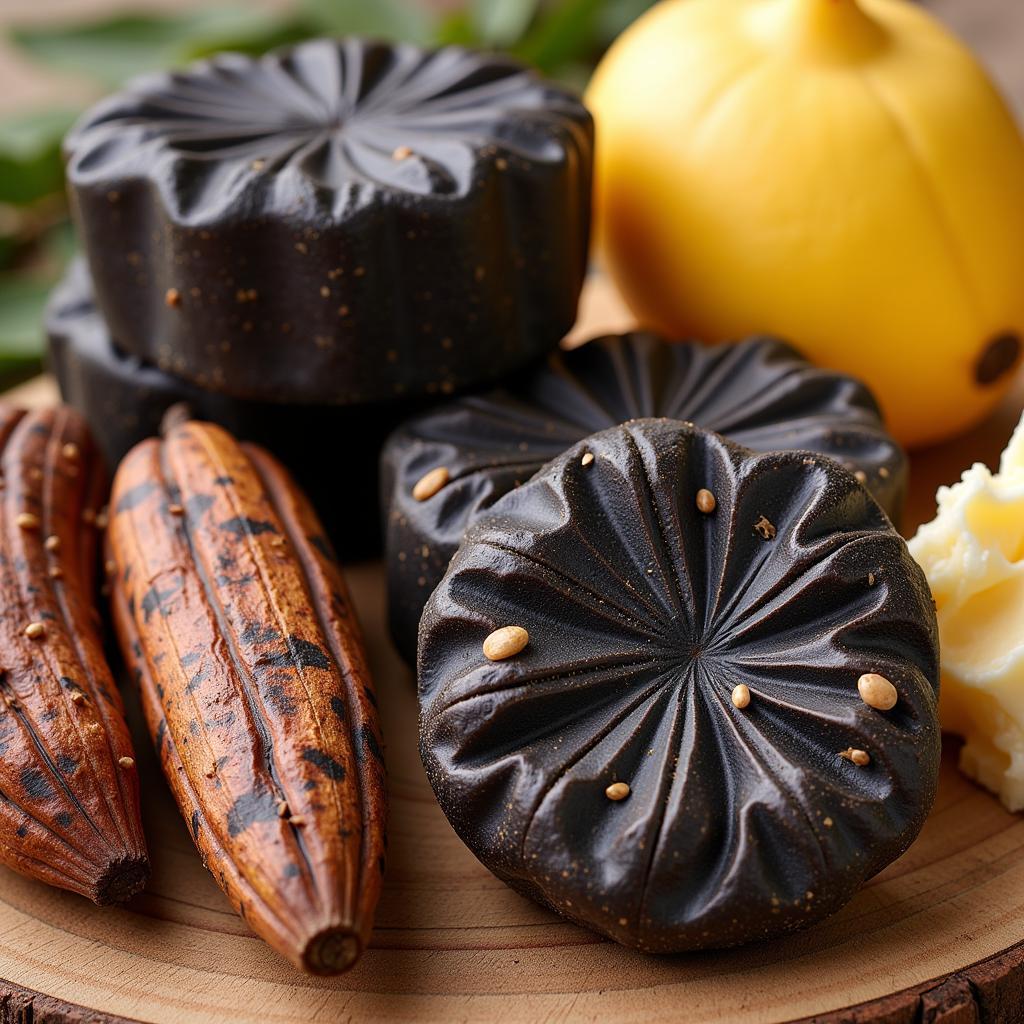Exploring the Delights of African Beef Curry
African Beef Curry is more than just a dish; it’s a celebration of flavors, a testament to the continent’s rich culinary heritage. From the fragrant spices to the tender beef, each element contributes to a unique and satisfying experience that reflects the diverse tapestry of African cuisine. This article delves into the world of African beef curry, exploring its variations, regional influences, and the secrets to creating an authentic taste of Africa in your own kitchen. We’ll uncover the history behind this beloved dish and understand why it holds such a special place in the hearts and homes of many Africans.
The beauty of African beef curry lies in its adaptability. While the basic premise remains the same – tender beef simmered in a rich, flavorful sauce – the specific ingredients and techniques vary greatly across the continent. This diversity is what makes exploring African cuisine so exciting. For instance, in East Africa, coconut milk and aromatic spices like cumin and coriander often take center stage. Meanwhile, in West Africa, peanut butter and fiery chilies might add a distinctive kick. And let’s not forget the influence of Indian cuisine in South Africa, where fragrant garam masala and turmeric contribute to a more complex flavor profile. Interested in other African ground beef recipes? This resource offers a variety of options.
Regional Variations of African Beef Curry
One of the most fascinating aspects of African beef curry is the way it reflects the unique culinary traditions of different regions. Let’s take a closer look at some of the regional variations:
- East African Beef Curry: Often features coconut milk, ginger, and a blend of spices like cumin, coriander, and cardamom. The sweetness of the coconut milk balances the savory beef and spices beautifully.
- West African Beef Curry: Characterized by the use of peanut butter, tomatoes, and chilies, resulting in a rich, nutty, and sometimes spicy curry. This version often incorporates local vegetables like okra and spinach.
- South African Beef Curry: Shows a strong Indian influence, with the prominent use of garam masala, turmeric, and curry leaves. This variation often includes potatoes and other vegetables for a hearty and flavorful meal.
- North African Beef Curry: Although less common, some North African countries incorporate beef stews with similar flavor profiles to curries. These often include dried fruits and nuts, adding a touch of sweetness and texture.
What Makes African Beef Curry Unique?
What sets African beef curry apart is not just the ingredients, but also the stories and traditions that surround it. It’s a dish often shared with family and friends, a symbol of hospitality and community. It’s a taste of home, a reminder of cultural heritage passed down through generations. Moreover, African beef curry is incredibly versatile. It can be served with rice, fufu, ugali, injera, or even crusty bread. The possibilities are endless, making it a perfect dish for any occasion. Curious about typical South African food? Explore more here.
Key Ingredients and Spices
Understanding the key ingredients is crucial to appreciating the nuances of African beef curry. While the specific spices may vary, some common elements include:
- Ginger and Garlic: These aromatic powerhouses form the base of many African curries, adding depth and warmth.
- Chilies: From mild to fiery, chilies bring the heat and add a distinctive kick to the curry.
- Cumin and Coriander: These earthy spices are essential for creating the characteristic flavor of many African curries.
- Turmeric: Adds a vibrant yellow color and a subtle earthy flavor.
- Cinnamon and Cloves: These warm spices add a touch of sweetness and complexity.
Cooking Methods
Traditional cooking methods often involve slow simmering over low heat, allowing the flavors to meld and the beef to become incredibly tender. This slow cooking process extracts the maximum flavor from the spices and creates a rich, satisfying sauce. Looking for more information on African cuisine in Cape Town? This link provides a great overview.
Making Your Own African Beef Curry
Creating an authentic African beef curry at home is easier than you might think. While there are countless variations, the basic steps involve:
- Browning the beef: This adds depth of flavor to the curry.
- Sautéing the aromatics: Ginger, garlic, and onions create the flavor base.
- Adding the spices: Toasting the spices enhances their aroma and flavor.
- Simmering the curry: Slow cooking allows the flavors to develop and the beef to become tender.
- Adding vegetables (optional): Potatoes, carrots, and other vegetables add texture and nutrients.
- Finishing touches: A squeeze of lemon juice or a dollop of yogurt can brighten the flavors. Need an African food chart for inspiration? Check this out.
Conclusion
African beef curry is a testament to the continent’s diverse culinary traditions. From the fragrant spices to the tender beef and regional variations, this dish offers a truly unique and satisfying experience. Whether you’re a seasoned cook or a culinary novice, exploring the world of African beef curry is a journey worth taking. So, gather your ingredients, embrace the aromas, and embark on a culinary adventure that will transport you to the heart of Africa. Are you interested in trying an African fried rice recipe? This link has a delicious option.
FAQ
-
What is the best cut of beef for African beef curry? Beef chuck or stew meat works best as they become tender during slow cooking.
-
Can I use pre-ground spices? Yes, but toasting whole spices before grinding them will enhance the flavor.
-
How long should I simmer the curry? At least an hour, or until the beef is very tender.
-
What can I serve with African beef curry? Rice, fufu, ugali, injera, or crusty bread are all great options.
-
Can I adjust the spice level? Absolutely! Add more or less chili according to your preference.
-
Can I make a vegetarian version? Yes, substitute the beef with firm tofu or vegetables like butternut squash or sweet potatoes.
-
How do I store leftover curry? Store in an airtight container in the refrigerator for up to 3 days.
Other common questions about African Beef Curry:
- What are some variations of African beef curry that include beans or lentils?
- Where can I find authentic African spices for my curry?
- Are there specific types of rice that are traditionally served with African beef curry?
Find more information on our website about:
- Other African stews and tagines
- Vegetarian and vegan African recipes
- The history and cultural significance of African cuisine
For any assistance or inquiries, feel free to contact us.
Phone: +255768904061
Email: kaka.mag@gmail.com
Address: Mbarali DC Mawindi, Kangaga, Tanzania.
We have a 24/7 customer service team.


